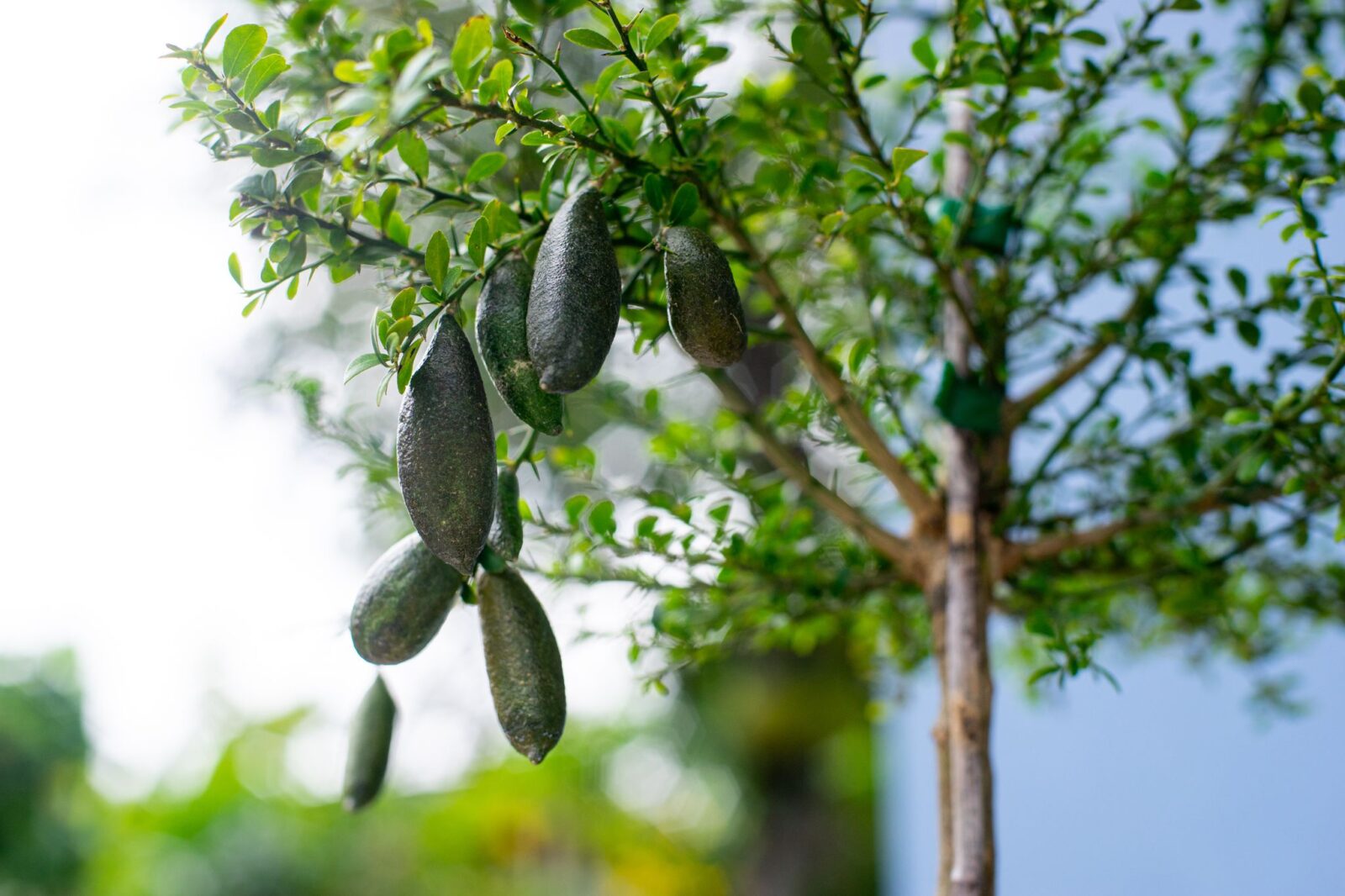AgriFutures Australia welcomes new Chairman
 EMERGING INDUSTRIES / Wednesday, 26 July 2023
EMERGING INDUSTRIES / Wednesday, 26 July 2023
Rise of ‘citrus caviar’; bringing the Australian native finger lime to attention

Known by chefs as ‘citrus caviar’, the caviar-shaped fruit pulp of the Australian native finger lime has a unique taste and lends a flavoursome and colourful garnish to high-end restaurant dishes.
The tiny fruits taste similar to conventional limes, although generally not as sour.
What truly sets them apart from other members of the citrus family is what earned them their nickname of ‘citrus caviar’: the individual vesicles or “beads” of juice which, like actual caviar, pop when you bite into them.
Senior Manager Emerging Industries, Dr. Olivia Reynolds, invites you to indulge in this unique native citrus: “Pop some of the delicious citrus caviar into your favourite drink for a zesty tang or make a native finger lime cheesecake – yum!”
Finger limes also have medicinal properties – they’re high in folate, potassium, vitamin E and vitamin C, and are used for cosmetic, pharmaceutical and nutraceutical products.
It’s just one of the aspects of the fruit that industry is looking to promote as part of the recently launched Australian Native Finger Lime RD&E Plan (2023-2028).
Power in a united industry
Author of the RD&E Plan, Maria Redman, said the plan offers industry vital direction to move forward together, but funding is vital to its long-term success.
“The RD&E plan sets out the Australian native finger lime actions that the industry has indicated are the most important to future growth and development,” she said.
She noted the importance of securing this support at home, lest Australia watch other countries benefit from its unique bush foods.
At an international level, the finger lime industry is supported through the collaboration of key stakeholders, including investors, universities and governments in many other countries.
“Funding in Australia should focus on product use, storage growth and operational efficiencies,” Maria said.
“The industry has accepted this RD&E plan as the conduit for furthering the development of the Australian Finger Lime Industry.”
Shining spotlight on finger limes
Australia is home to a unique range of native citrus species, in a variety of shapes, sizes and colours. Commercial production of native limes has developed progressively in Australia over the past 20 years in parallel with increasing interest in the broader Australian native foods sector.
Finger limes are a niche and still underdeveloped industry component of citrus production in Australia, mainly along the eastern coastline of New South Wales and Queensland, where plantations range from 100 to 2000 trees.
There are 20 major growers, and when their production is combined with that of smaller growers, approximately 100 tonnes of native finger lime is produced annually. The estimated farmgate value of Australian native finger lime was $600,000 in 2012 but grew to $3.1 million in 2020.
Growers have developed an enormous diversity of native lime varieties, with high potential to further develop commercially.
“There is a range of other value-adds including pharmaceuticals, nutraceuticals and cosmetics, due to its excellent antioxidant properties and other benefits,” said Dr. Reynolds.
Opportunities also exist to use the leaf and peel, including for oil and dried extract, in addition to fresh fruit.
One of the biggest issues for the domestic market is that the native finger lime is an unknown fruit. The average consumer hasn’t heard of or seen a native finger lime.
The export market is larger than the local market as Australian consumers lack knowledge and understanding of how to use the product in its different forms, highlighting a key opportunity for developing a consumer education program for this unique citrus.
Once addressed through the framework in the RD&E Plan, domestic and international demand for the produce is expected to grow, leading to worldwide recognition for Australian-grown native finger limes and a sustainable and successful industry.
“The opportunities for this emerging native industry don’t end with food and drink,” said Dr Reynolds.
The plan is the result of extensive stakeholder consultation across Indigenous, research and value-add organisations, as well as producers, within the Australian native finger lime industry.
For more information about the AgriFutures Emerging Industries Program, visit: Emerging Industries | AgriFutures Australia.
Latest News
-
AgriFutures Australia welcomes new Chairman CORPORATE / 26.07.23
CORPORATE / 26.07.23 -
Protecting Australia's beekeeping future through smart traceability HONEY BEE & POLLINATION / 26.07.23
HONEY BEE & POLLINATION / 26.07.23 -
Meet your future agronomists: The five Horizon Scholars getting a career head start WORKFORCE AND LEADERSHIP / 26.07.23
WORKFORCE AND LEADERSHIP / 26.07.23 -
New data reveals $8 billion contribution of Australia’s chicken meat industry CHICKEN MEAT / 26.07.23
CHICKEN MEAT / 26.07.23






